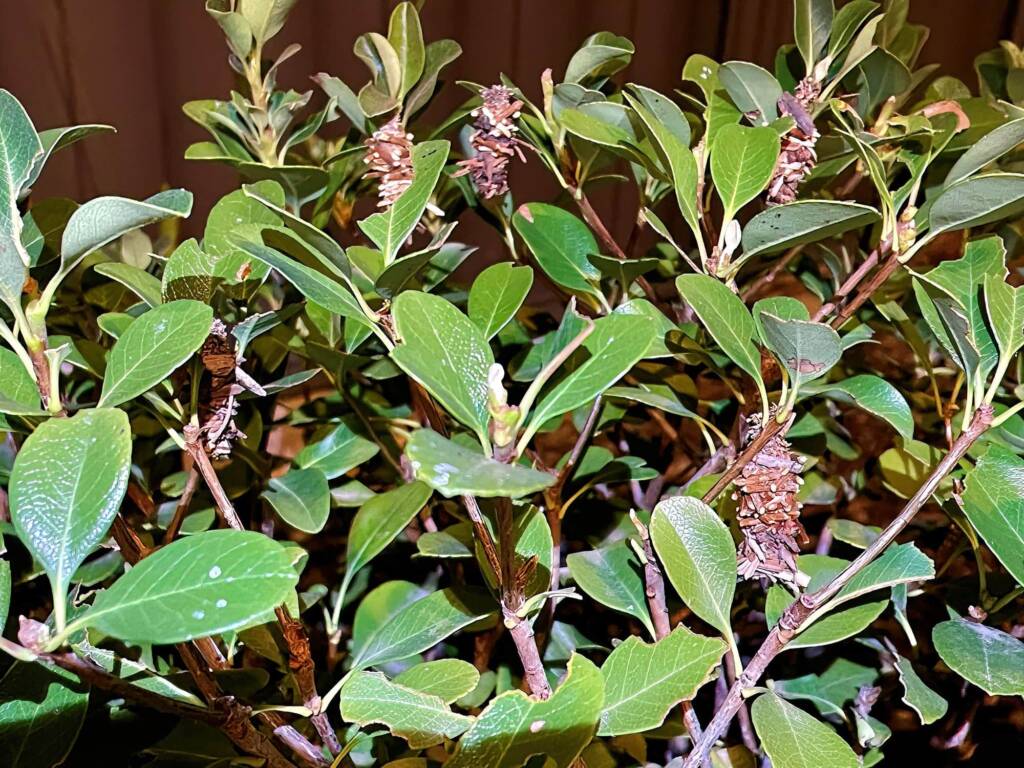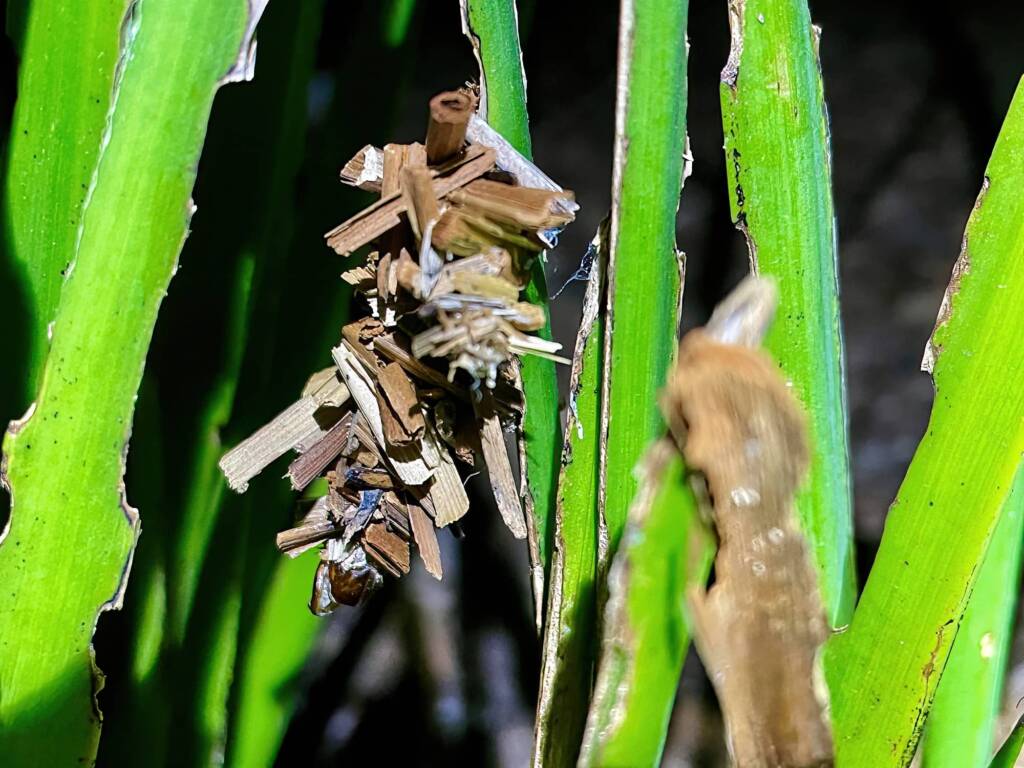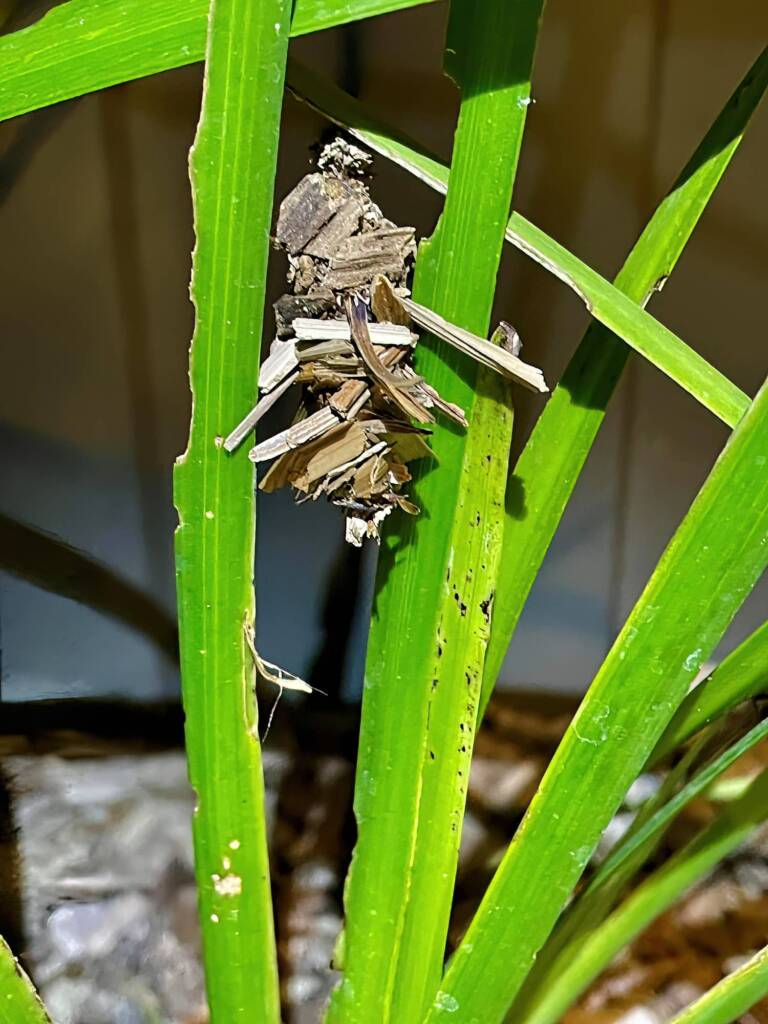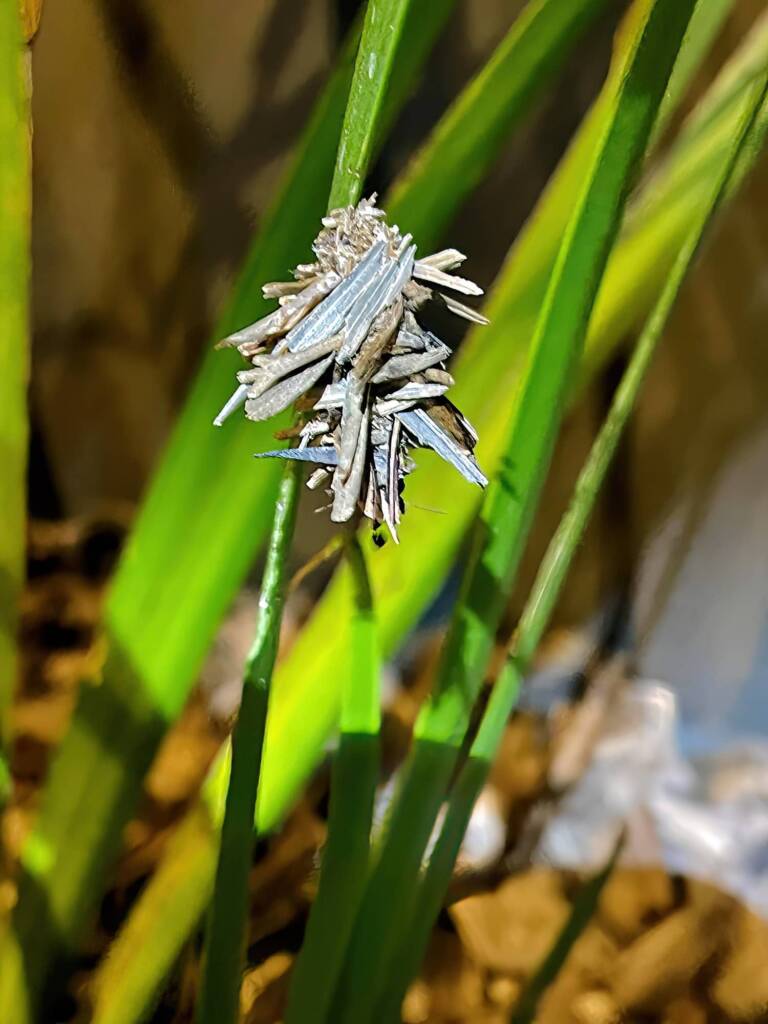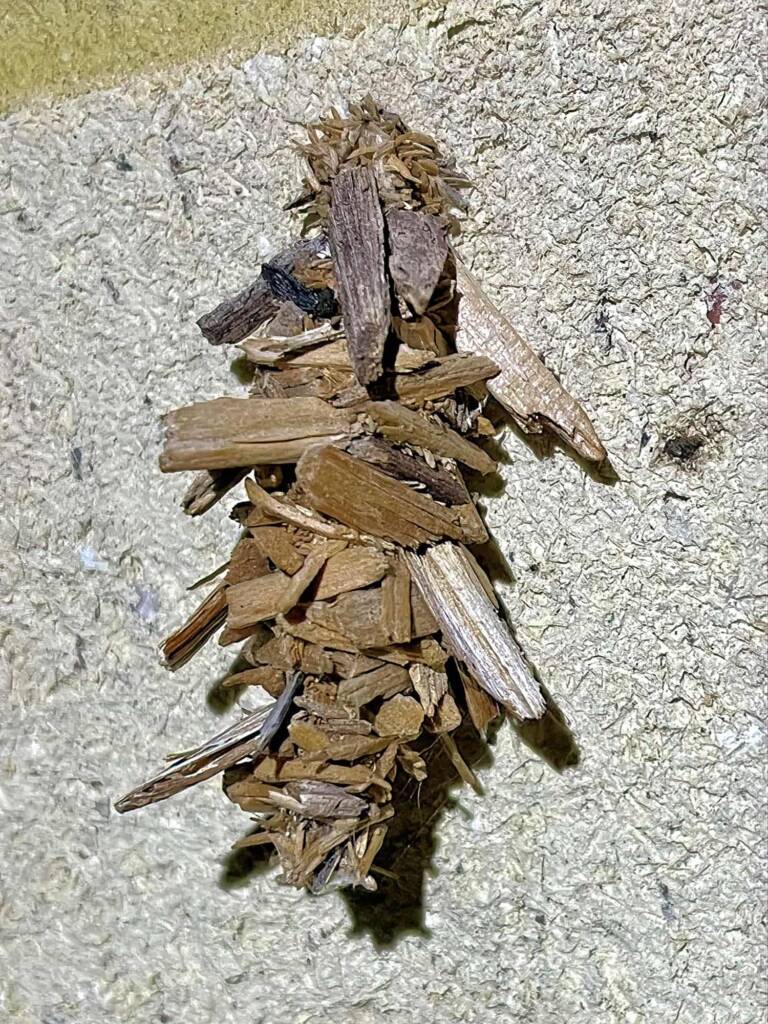Case Moths (Variety of Cocoons)in the garden
The case moths are one of those interesting insects that can be oberved moving around, adding more things to the casing (depending on species it could be twigs, leaves or grains of sands), looking for food and feeding. It will then find a permanent position to attach themselves, where it will pupate, which can be take a few weeks to a few months depending on the season and the weather.
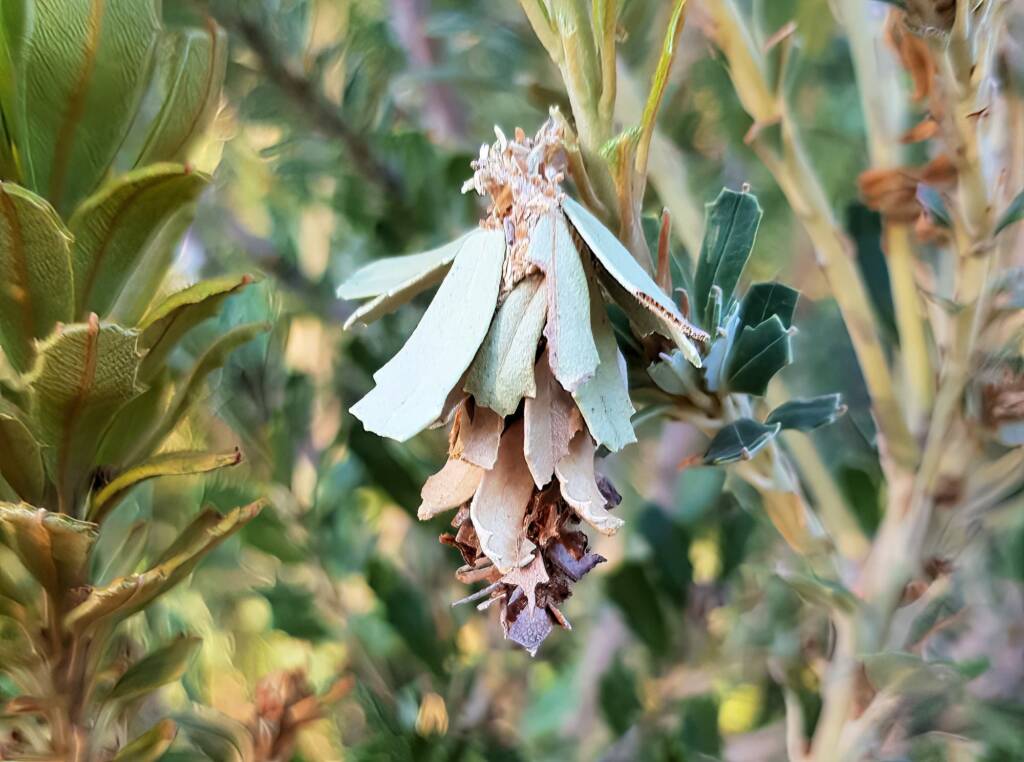
The casing that the case moth (or bag moth) can often be seen moving around with in your garden environment (almost like a mobile home), has also be described as a pupa case, larval case, cocoon. Such description, does not take into account that for some insects (including moths), the “case moth” is very different in that it describes a group of moths that have created a casing, that allows them to move around (from one place to another), until they find a permanent spot to stay.
Once they find the “perfect spot”, they then permanently attached themselves to this spot (whether it be a leaf, twig, branch, tree trunk, under garden furniture or the side of a building). The female case moth caterpillar will then seal herself within the casing, where she will remain and die. The eggs will then hatch, and it is thought with many species, that the young will feed on the mother, before being ready to leave emerge from the casing.

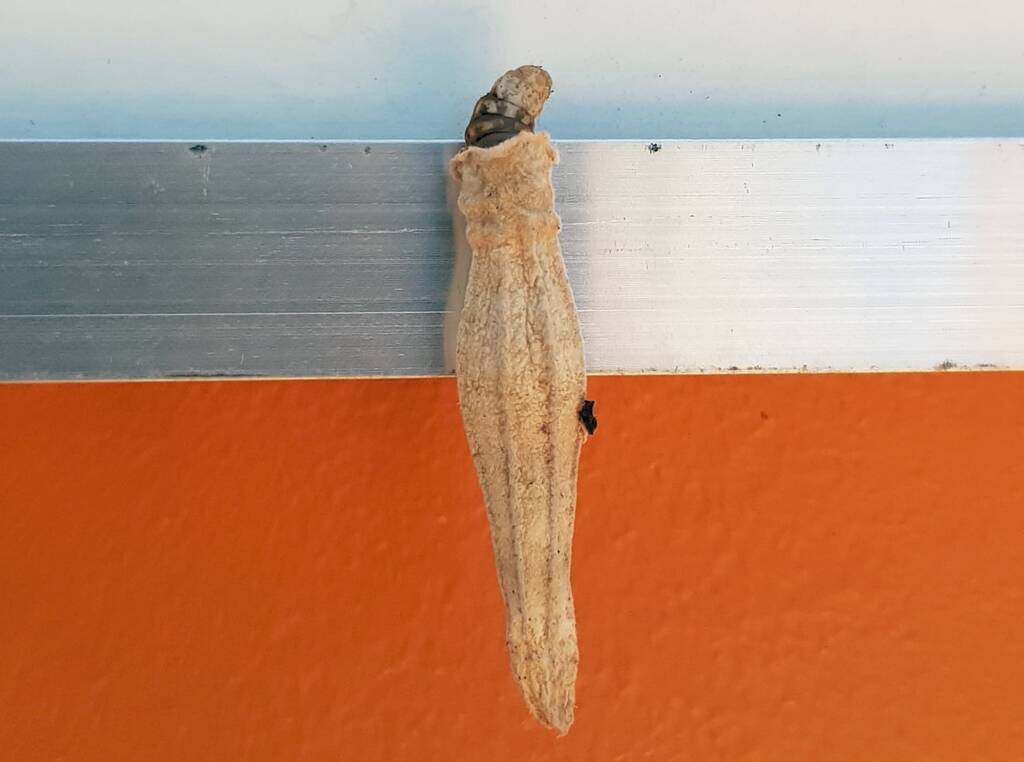
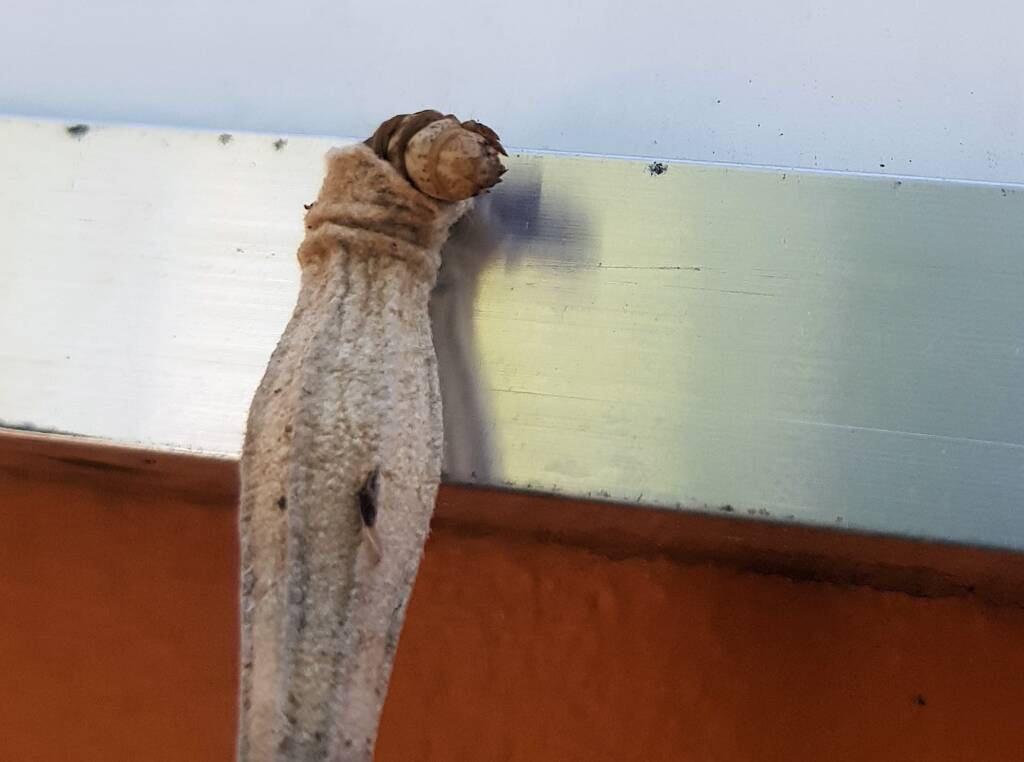
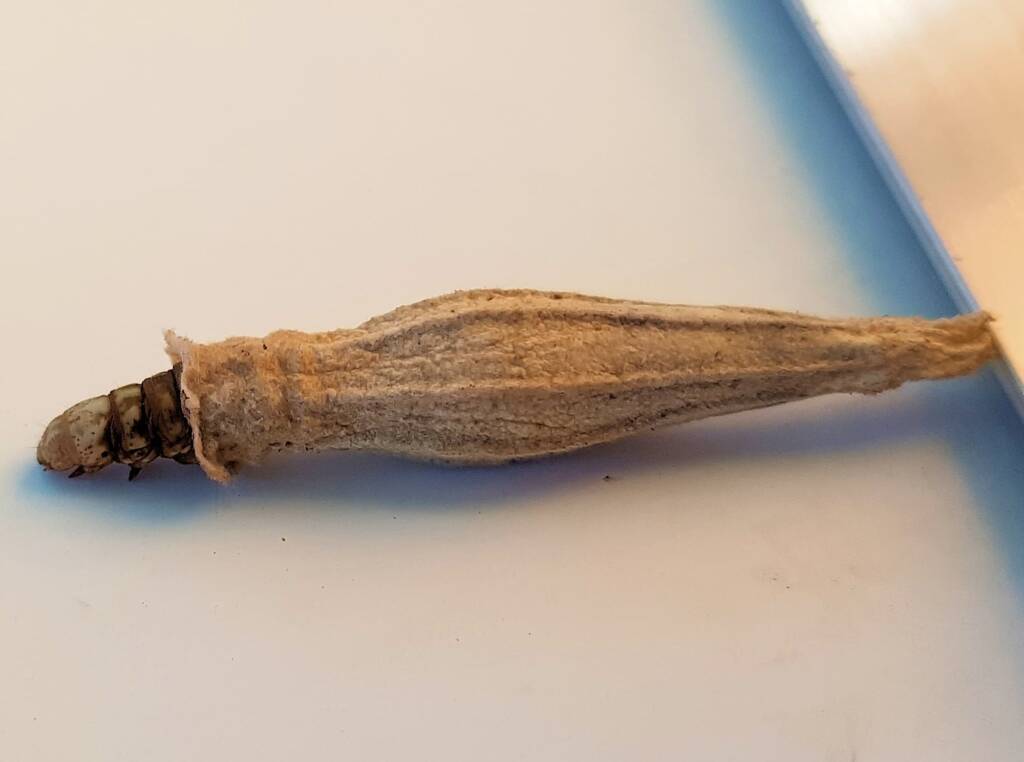
The case has an anterior hole, through which the head and thorax can sometime be seen protruding as the case moth move around and feeds. The posterior end also has a hole for secretion and from which newly hatched moth will emerge.
Most species of female adult case moth have no wings and remains within the case. It is thought that the males of most species, mate with the female, who remain inside her case, where she lays her eggs.
Case moths can be found in a variety of habitats, from bush habitats, parks, reserves and urban gardens,. Sometimes they are found attached and hanging from exterior walls, gates, even garden furniture.
In the following series of image, many case moths were observed having made themselves at home in a home garden in Swan Valley, Western Australia. Close observation will see some of the casing are different, indicating different moth species.
Many of the case moths were observed on the kangaroo paws. They were then seen to migrate across the garden to the lilly pilly bushes. Some case moths attaching themselves to a garden chair, fence and on the wall (this one being there for about a year and a half).
There is some great information on the Coffs Harbour Butterfly House about the Family Psychidae and the variety of caterpillars that create these protective coverings. Check out their pages (see Footnote & References below).
Another amazing website with images of the variety of case moth groups is iNaturalistAU on their Case Moths (Family Psychidae)1.

- Scientific classification
- Kingdom: Animalia
- Phylum: Arthropoda
- Class: Insecta
- Order: Lepidoptera
- Family: Psychidae
- Subfamily: Oiketicinae
- Genus:
- Hyalarcta
- Lomera
- Scientific classification
- Kingdom: Animalia
- Phylum: Arthropoda
- Class: Insecta
- Order: Lepidoptera
- Superfamily: Tineoidea
- Family: Psychidae
- Diversity:
- 10 subfamilies, 241 genera and 1,350 species

Footnote & References
- Case Moths (Family Psychidae), iNaturalistAU, https://inaturalist.ala.org.au/taxa/61415-Psychidae
- Psychidae, Bagworm Moth, Atlas of Living Australia, https://bie.ala.org.au/species/https://biodiversity.org.au/afd/taxa/1a7fdf19-c0f2-4ace-ab9c-8e3a602615fa
- Some Caterpillar cases of PSYCHIDAE in Australia, Bagworms, Case Moths, TINEOIDEA, by Don Herbison-Evans and Stella Crossley, Coffs Harbour Butterfly House, http://lepidoptera.butterflyhouse.com.au/psyc/psyc-cases.html
- Some photos of Caterpillars of TINEIDAE in Australia, Clothes Moths, Coffs Harbour Butterfly House, http://lepidoptera.butterflyhouse.com.au/tine/tine-cats.html
- PSYCHIDAE in Australia, Bagworms, Case Moths, Coffs Harbour Butterfly House, http://lepidoptera.butterflyhouse.com.au/psyc/psychidae.html
- Saunders’ Case Moth (Metura elongatus), Australian Museum, https://australian.museum/learn/animals/insects/case-moths/
- Bagworm moth, https://en.wikipedia.org/wiki/Bagworm_moth (last visited July 4, 2021)
- List of moths of Australia (Psychidae), https://en.wikipedia.org/wiki/List_of_moths_of_Australia_(Psychidae) (last visited Mar. 3, 2022)
- Case Moths, Bag Moths – Family Psychidae, Moths, Brisbane Insects and Spiders, https://www.brisbaneinsects.com/brisbane_moths/PSYCHIDAE.htm
- 5 Mysterious Structures from the World’s Smallest Architects, by Nicky Bay, Nicky Bay’s Macro Photography, https://www.nickybay.com/5-mysterious-structures-world-smallest-architects/
- Angle of dangle, 29 April 2015, NewScientist, https://www.newscientist.com/lastword/mg22630191-600-angle-of-dangle/
Case Moths (Variety of Cocoons)in the garden
MothsMoths Index Aedia arctipennis Anthela guenei (Four-Spot Anthelid Moth) Australian Striped Hawk Moth Bag-shelter Moth (Ochrogaster lunifer) Case Moths (Variety of Cocoons) Coenotes eremophilae Convolvulus Hawk Moth Emperor Gum Moth (Opodiphthera eucalypti) Four-spotted Cup Moth Green-blotched Moth (Cosmodes elegans) Leaf Case Moth Mistletoe Emperor Moth Mistletoe Moth (Comocrus behri) Plume Moth Rattlepod Moth (Utetheisa) Ribbed Case Moth Sameodes cancellalis Saunders’ Case Moth (Metura elongatus) White-spotted Owl-Moth





